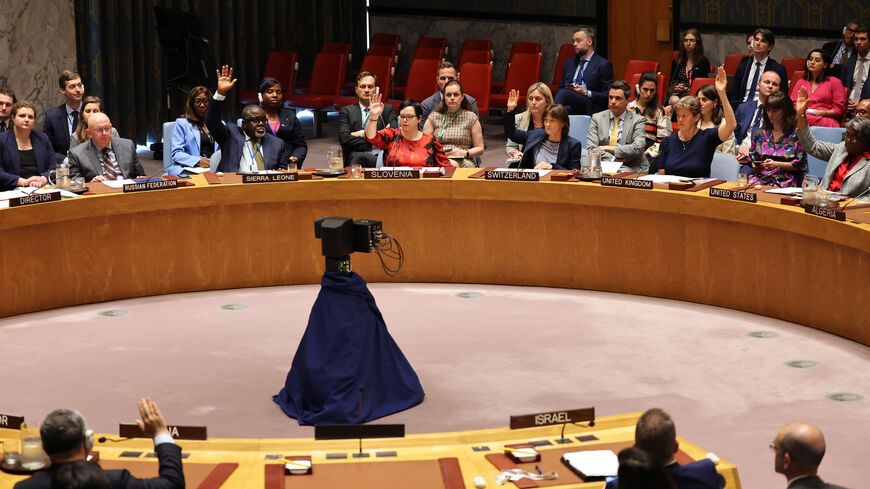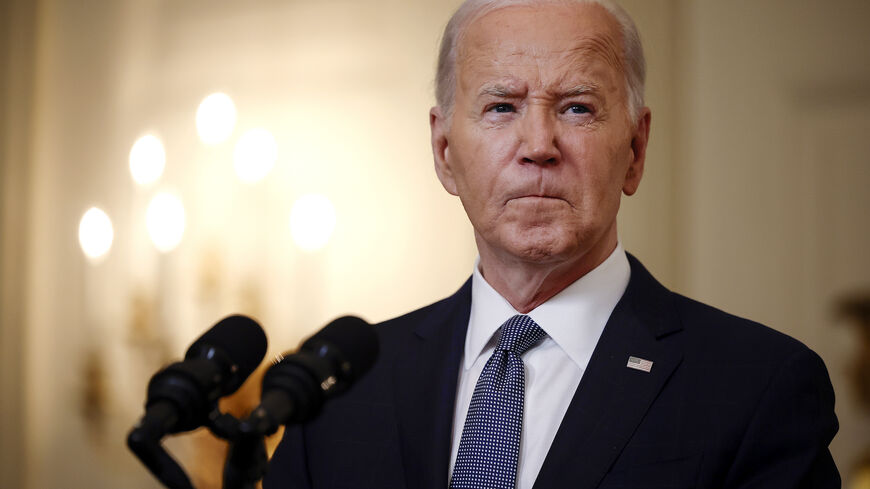Cautious optimism in Gaza, Israel as US makes last-ditch cease-fire push
As the United States presses for a cease-fire, Al-Monitor spoke with two Americans — one displaced in Gaza and another whose uncle is being held hostage there — about the deal on the table.

You're reading an excerpt from The Takeaway, where we break down the latest in US-Middle East diplomacy. To read the full newsletter, sign up here.
WASHINGTON — Every day for months, Palestinian-American Khalid Mourtaga used the precious battery life in his phone to see if his name has appeared on the list of those approved to depart the Gaza Strip.
The 22-year-old from Mississippi who moved to Gaza as a child has been trying to escape the Palestinian enclave since early November, when the Rafah crossing into Egypt opened to foreign evacuees.
The crossing, the main hub for aid deliveries and evacuations, has been closed since its seizure by the Israeli military last month, causing a diplomatic row with Egypt. As Israel expanded its military offensive in Rafah, Mourtaga and his relatives fled to the central Gaza city of Deir al-Balah, where they are now crammed into a family friend’s apartment.
“Nothing is left for us,” Mourtaga told Al-Monitor by phone. “No houses, no farms, no streets, no water and no electricity. Whole families will disappear every day. We have nowhere else to go.”
Mourtaga sees a cease-fire between Israel and Hamas as his only ticket out.
“I think [Israel] will accept,” Mourtaga told Al-Monitor by phone. “It seems to me only their prime minister is the stumbling block.”
In a surprise announcement from the White House Friday, President Joe Biden made public what he described as a “comprehensive” proposal that if fully implemented would bring a “durable end to the war” that has killed an estimated 36,000 Palestinians.
The first phase of the deal calls for both sides observing a “full and complete cease-fire” for six weeks and Israel withdrawing its forces from populated areas of Gaza.
Hamas would free the remaining women, elderly and wounded hostages in return for Israel’s release of hundreds of Palestinians held in its jails. During this stage, Israel also would allow at least 600 aid trucks to enter Gaza each day, compared to the fewer than 100 truckloads that reached the territory daily last month.
Negotiations would then start over the second phase, which would see the release of male hostages and the full withdrawal of Israeli troops from the war-torn territory.
Reconstruction of the devastated coastal territory would begin in phase three, and Hamas would return the remains of the dead hostages. Israeli authorities have said that of the roughly 125 out of 250 original hostages remaining in Gaza, more than 40 are believed dead.
Unclear messaging
So far, neither Hamas nor Israel has explicitly approved the cease-fire proposal. Transitioning from phase one’s temporary cease-fire to phase two’s permanent “cessation of hostilities” would require them to overcome a seemingly intractable sticking point.
Hamas refuses to accept any deal that removes it from power, and Israel says it won’t leave Gaza without reaching its stated goal of eradicating Hamas.
The Biden administration maintains the ball is in Hamas’ court and that the deal approved by Israel’s war cabinet is similar to a previous version accepted by the Palestinian militant group.
“The Israeli government has reconfirmed repeatedly, as recently as today, that that proposal is still on the table, and now it’s up to Hamas to accept it,” US national security adviser Jake Sullivan told NBC on Wednesday.
Sullivan and other senior US officials have portrayed Hamas as the sole obstacle to the deal, even as Biden recently acknowledged to Time magazine that “there is every reason” to believe Israeli Prime Minister Benjamin Netanyahu is prolonging the war to serve his own political agenda.
Publicly, Netanyahu has offered only vague support for what Biden described as an “Israeli proposal.” Complicating his potential endorsement are threats from far-right members of his coalition who said they would sink Netanyahu’s fragile government if Israel accepts a cease-fire deal that doesn’t ensure Hamas’ total defeat.
The embattled prime minister has also faced criticism from hostage families who accuse him of putting his own political survival ahead of a deal that would free their loved ones.
His critics include Hanna Siegel, whose uncle Keith Siegel was kidnapped from his home in Kibbutz Kfar Aza on Oct. 7 and is among the handful of Americans the Biden administration believes Hamas is still holding. The group’s military wing released a video of Siegel speaking under duress in April, suggesting he was still alive after more than 200 days in captivity.
“I've watched Netanyahu put his political consideration and his political future ahead of the hostages several times since October 7,” Siegel told Al-Monitor. “Always for my family one of the big fears is that he's going to make that choice again.”
On Thursday, the United States and 16 other countries whose citizens were taken hostage issued a joint statement calling on Israel and Hamas “to make whatever final compromises are necessary to close this deal."
Siegel and other relatives of American hostages received an update on the cease-fire talks from Sullivan during a meeting in Washington on Tuesday. The administration has sent CIA Director William Burns and Middle East czar Brett McGurk back to the region to coordinate with Qatari and Egypt officials mediating the talks.
“It’s very clear they're doing absolutely everything that they can,” Siegel said, adding, “but we have learned the hard way not to get our hopes up.”








